
You stare at the solid door hanging from the frame at the entryway of your home. It looks old and boring, and you're starting to get sick of constantly having to heave that door open every time you want to get in or out of your house.
You want a new entry door. A door that matches the modern style you're trying to achieve elsewhere in your home while being practical enough to make it a usable front door. A pivot front door may be the answer. But before you swivel away to find one, you need to know how these doors work and the types available for your home.
After all, pivot doors aren't always entrance doors. They're just as suitable for your home's interior (as long as you get the right types) as they are for the entryway. Plus, who knows? You may end up with multiple pivot doors by the time you've finished reading this article.
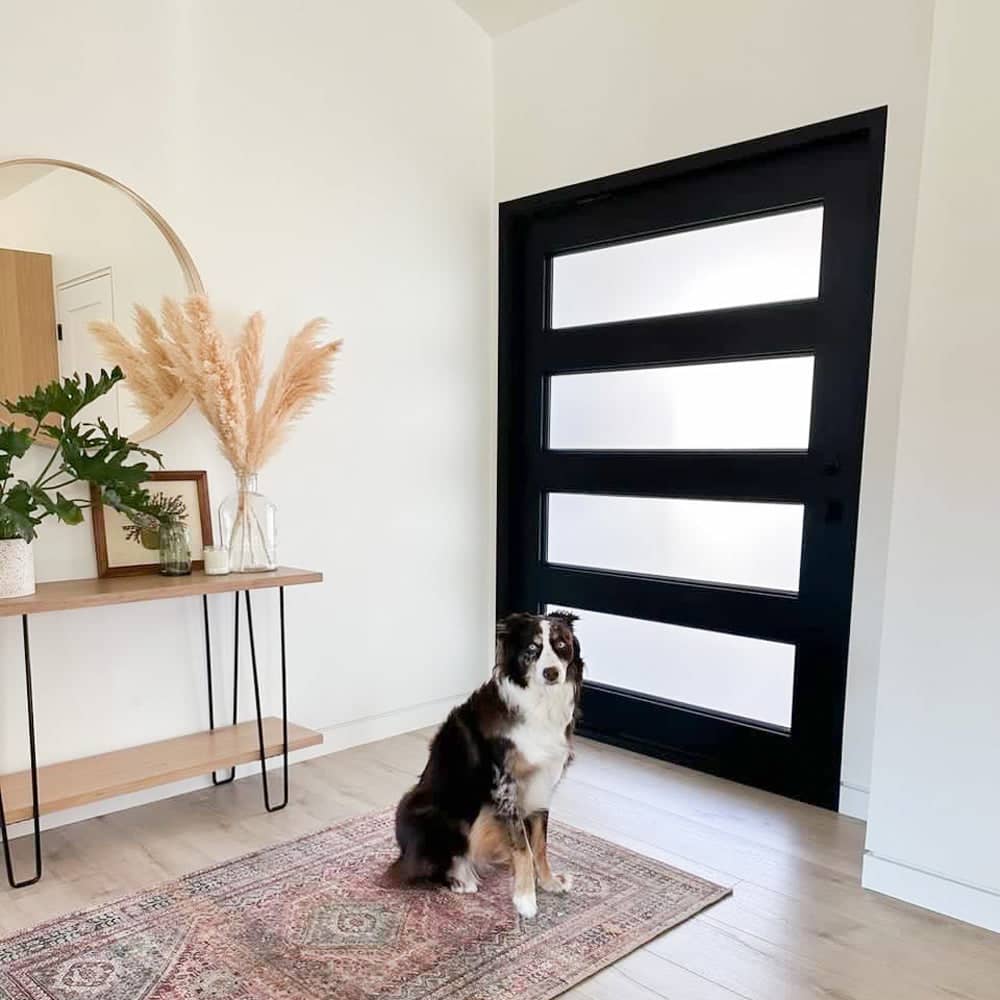
What Are Pivot Doors?
Pivot doors take the normal way that a door swings and turns it on its head. Gone are the hinges built into the side of a door frame to hold the door. In their place are hinges mounted at the top and bottom of the door, creating a pivot point that allows the door to swing open on a vertical axis, though one that's not constrained to the side of a door frame.
The use of these pivot hinges makes pivoting doors look and feel different from traditional ones. The door pivots open vertically, and often at the center, leaving two spaces (one on either side) for you to walk through. It's a little like having double doors in your entryway, with an especially large pivot door capable of creating two "walkways" on either side. Other styles of pivot doors have the pivots installed near the sides so the door mimics the swing of a traditional door.
Think of the doors as giant panels mounted on a central pivot hinge, and you have the right idea. With a pivoting door, a little push is all you need to open the door, and you get a front entrance (or interior space) that's transformed with a unique design.
The Features of a Pivot Door
A pivot door can create a grand entrance into a space, one that lets in a substantial amount of natural light if you go for a glass-based option. But there are other interesting features of these doors that make them stand out.
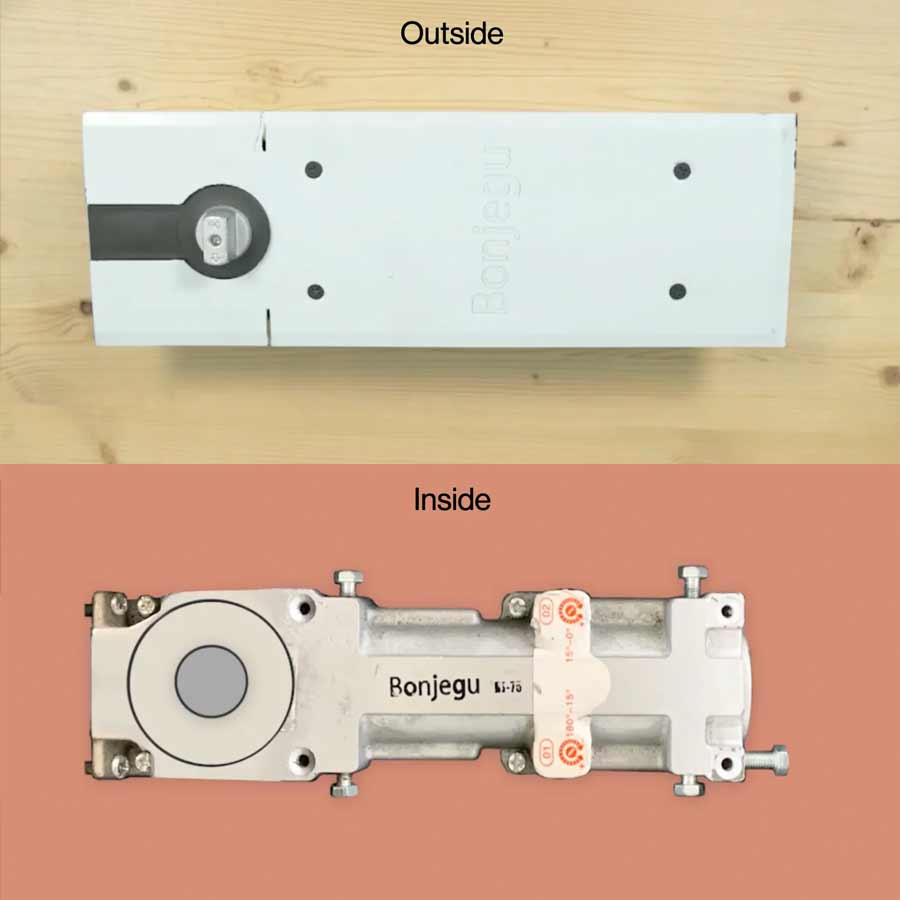
Adjustable Pivot Door Hinge
The hardware is where much of the differences between pivot and traditional doors come into play, starting with the pivot door hinge. As we mentioned, hinges are placed at the top and bottom of the door, making it ideal for swinging open a larger door easily, which may require a lot more force with side-installed hinges.
The axis position of those hinges can also change how the door works.
Some offer 180 degrees of movement, essentially opening to a 90-degree angle on either side before locking in the center. Others have 360-degree axis positions, allowing the door to rotate fully on its axis rather than locking into place. You can also position the pivot hinge almost anywhere along the top and bottom of the door and create pivot doors that look like regular doors when opened.

Hands-Free Opening
Handles are a thing of the past with pivot doors. Sure, you can have basic handles to give you something to grip when you're pushing the door open, but you don't need that handle to physically use a pivot door. A simple push does the job.
Interestingly, this feature makes pivot doors a great choice for those who have mobility or coordination problems as well as for those who want to create a modern look. If you take twisting a doorknob out of the equation, you get a type of door that's far easier to open.
Self-Closing Hinged Doors
What happens after you open a traditional door?
You have to give it a little push or pull to close it again. It's a minor inconvenience, sure, but it's one you don't have when you install pivot doors. Assuming you don't engage a lock on the hinge to keep the door in place, it'll rotate back along its axis to close after you've walked through the opening.
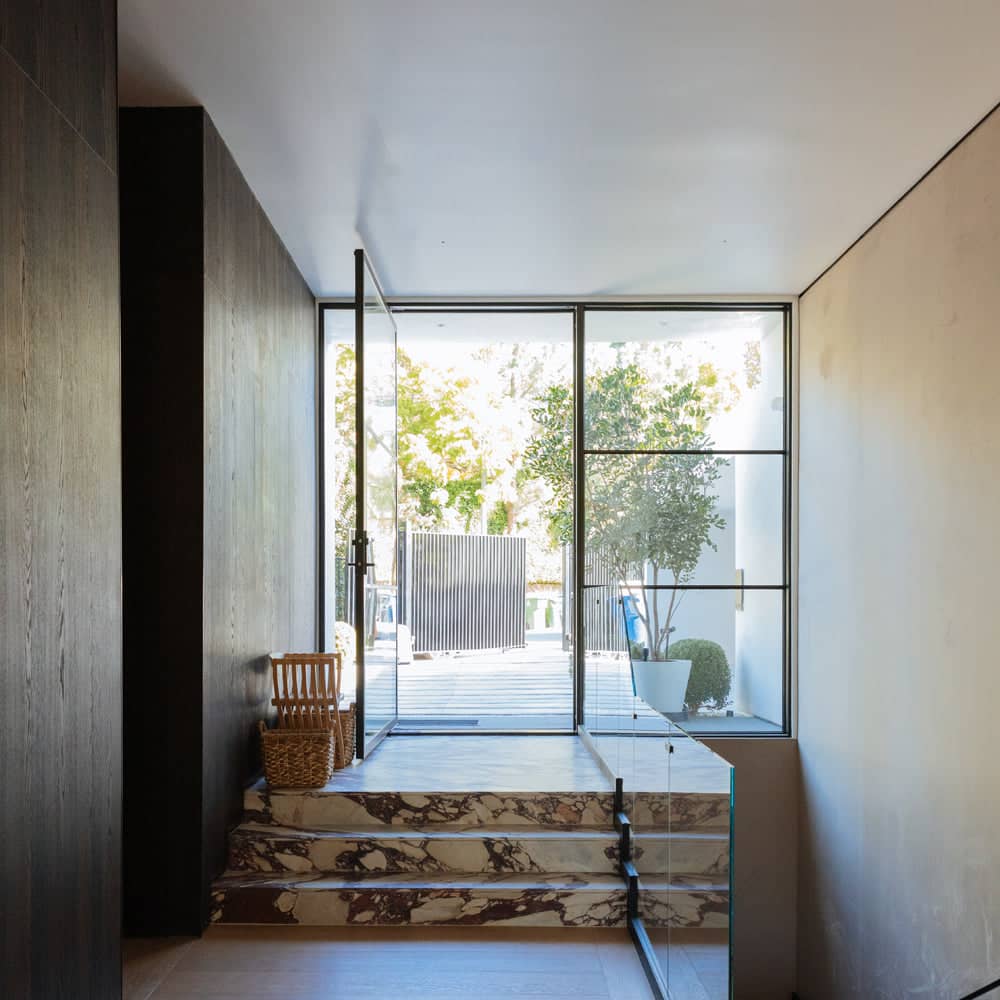
Holds at 90 Degrees for a Large Opening
Of course, you're not always going to want your door to close itself right after you've entered. That'll make for a rough opening if you're trying to get several people through the door one right after the other or you're moving items back and forward.
That need for the door to sometimes stay open is built into the door design, too. Most pivot doors include a lock on the hinges that hold the door open at 90 degrees. Generally speaking, that's more than enough room to move back and forward through the door without having to give it a push every time.
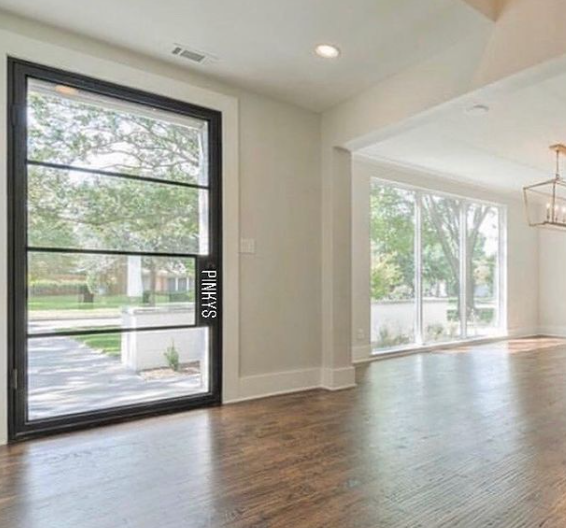
The Types of Pivot Doors
Now that you see how pivot doors differ from normal hinged doors, you may be thinking about looking for one for exterior or interior spaces. Picking the right type is essential, and there are seven main types from which to choose.
Glass Pivot Door
Glass pivot doors are like the classic flavor of Coca-Cola; they're the type that everybody knows and loves. These glass doors vary in design, from single glass panels surrounded by a metal frame to multi-panel doors that look like regular doors until they pivot open.
The type of glass you use is just as important as the design for these types of pivot doors. A single glass pane keeps costs low and makes weight distribution easier because one thin pane doesn't weigh too much and is easy to open. But you may end up with a "window" that also has less of a seal, making this type of door less than ideal in an entryway.
Insulated glass, such as low-emissivity glass, can solve this problem, with frosted glass being a good choice if you want to keep people from looking into your home.
Pivot Patio Doors
Take a traditional patio door, change the hinge construction, and you have a pivot patio door. This door style breathes new life into your patio by giving it a fresh look that you can't get with regular sliding doors. Granted, you may have to sacrifice a little space, at least when the door's open. The door pivots into your room and onto your decking, creating an obstruction you don't get with sliding doors.
That obstruction may be worth it if you're looking for a more modern aesthetic. But just as with glass pivot doors, these exterior pivot doors create energy loss concerns, though you can solve those issues with insulated glass.

Interior Pivot Doors
There's no reason to limit pivot doors to the outside of your home. What works for your patio can work just as well for any door in the house, and you'll create consistency throughout if you match interior pivot doors with exterior ones.
Getting the seal right is less of an issue with these types of inside doors because you don't have to worry so much about heat transfer to the world outside.
Pivot Shower Doors
A pivot shower door installs easily into a shower unit, with no complicated side hinges to worry about. You don't have to drill into tile, and the door will easily open outward to create an accessible walk-in shower unit.
It's here that a glass pivot door shines. You get a door that's easy to clean, easy to use, and looks the part of a modern bathroom.

Pivot Closet Doors
You're a little limited when using pivot doors for a closet, at least when installing them into traditional closets. The pivot hinges usually need to be on one side of the door, with a pull operation to stop the main part of the door from pivoting back into your clothes.
That all changes if you have a walk-in closet. Then, pivot closet doors can function just like any other pivot door you fit into your home.
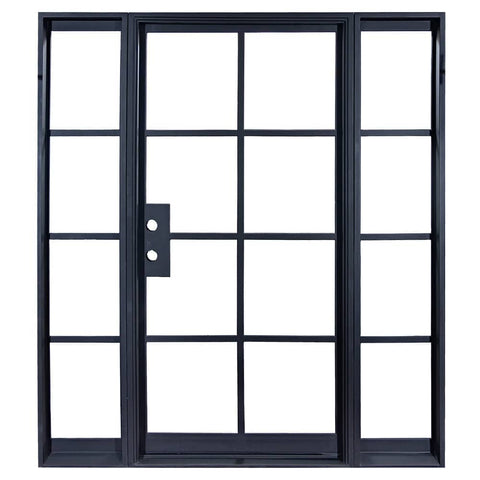
Commercial Pivot Doors
It's all about going heavy-duty on the commercial side of pivot door manufacturing. You'll see these types of doors in a lot of high-end retail establishments, with thick glass panels installed to ensure security. They're also handy doors to have in retail because they allow customers to easily exit a store when their hands are full of bags.
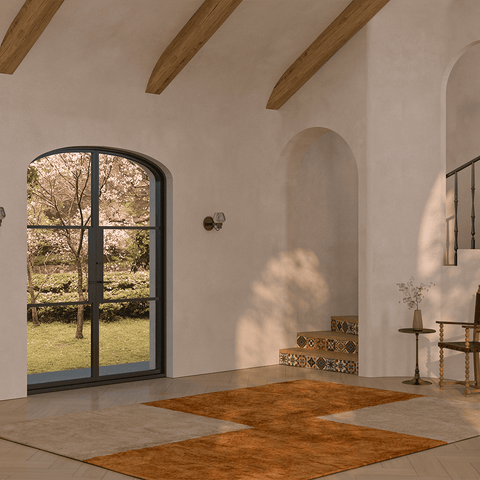
Double Pivot Doors
You can create a double-door effect with a large single-pivot door that has a hinge installed at the center. Swing the door open and you get a pair of walkways, one on either side.
Or you can go down the logical route: two pivot doors installed side-by-side with hinges fitted so they open out like regular doors. Double pivot doors fit the bill for larger entryways.

When is a Pivot Door Right For Your Home?
You've seen how pivot doors can suit many spaces inside (and outside) your home. Now, the question is simple: are pivot doors the right doors for you? If any of the following applies, you may be ready to "pivot" to a new type of door.
You're Tired of Traditional Doors
Traditional doors can feel a little old and tired. Of course, they're familiar, and it's easy to install a new door into side hinges that are already built into a frame, but that doesn't change the fact that they're not ideal for a modern home.
Traditional doors are bulky. You need to deal with the handles and prop them open if you’re bringing items in and out. Why stick with what works okay right now when pivot doors offer something that works better long term and looks more modern?
Ideal for Heavy Doors That Don't Fit a Regular Door Frame
When you introduce metal materials into the mix, as you will with iron or steel doors, a standard door frame gets placed under a lot of pressure. The entire weight of the door is supported on one side by a set of hinges. As time goes on, and the door is opened and closed repeatedly, those hinges begin to feel the pressure and start to deteriorate.
It's a one-sided weight management system that creates wear and tear. A system that you replace entirely with pivot doors. Thanks to the pivot hinge at the top and bottom, a pivot door frame offers extra support that's perfect for heavier doors.
It's Easy to Use Pivot Doors
In truth, there's not a huge difference between pivot doors and regular doors in terms of usage. You'll still push or pull the door open. But it's all so much easier with a pivot door, and it again comes down to the hinges at the top and bottom of the door.
Those hinges make it easier for the door to rotate. Less force needs to be applied. Add to that the lack of a regular handle mechanism (ideal for people with dexterity or joint issues) and you have a type of door that's easier to use than traditional doors.
Very Smooth Operation
You'll feel like you're gliding into your entryway when you have a pivot door. The clever hinge design ensures the door swings open with minimal force applied, and that swing is tempered by the hinge, so you don't end up with a wildly rotating door.
Again, that's ideal for front doors, in particular. Imagine walking up to your door with bags of shopping in hand and being able to give it a little nudge to get it open, rather than having to fumble for a handle or push the door with force while trying to balance your bags.
Get an Ultra-Modern Look
Go to the average home, and you're going to notice something; there are no pivot doors. That's the case for most properties, even modernized homes because pivot doors are still in the early phases of acceptance in the mainstream. The current door design is still stuck on the traditional side hinges. By going down the pivoting route, you create an ultra-modern look that wows people who aren't familiar with this type of door.
But it's not just the interesting hinges that create that modernity.
Clean and bold lines are hallmarks of the pivot door. Simple geometric shapes, such as square glass panels, combine to create a minimalistic style, unlike anything you see in bulky old traditional doors.
Pivot Doors Open and Close Silently
When you're creeping back into your house after a night on the town, you don't want the creaking of a door hinge to give you away. The same goes for the accidental slam of a regular door when you're moving around the house while others are sleeping.
If a silent night is what you want, the whisper-quiet mechanism of a pivot door is a perfect choice.

The Steps for Buying Modern Pivot Doors
"I love the idea of a pivot door," you say. "But I've never installed one before and I need to know how to find the right door for me." Let's resolve this concern by looking at the steps you'll take with PINKYS when choosing your pivot door.

Step 1 - Choose a Door Design
Everything starts with the look and feel of your pivot doors. Do you want a glass pivot door using a single pane of glass surrounded by an iron or steel border? What about a door that has multiple panes, creating a more modern geometric look while adding some weight to the door itself?
These are questions you'll need to answer, along with figuring out what purpose the door will serve before you move forward. PINKYS can make finding that answer easy if you're looking for a multi-panel design, thanks to our Air 4 and Air Lite pivot doors. But if you're looking for something more unique to you, we can customize a door with your input.
Step 2 - Determine the Size You Need
There are two considerations for size: the rough opening and the net frame size.
For the rough opening, look to build something that's about half an inch wider and taller than the pivot door itself. That extra half-inch may prove crucial if you need to adjust or shim the door when installing.
The reverse measurement applies to the net frame size. Knock half an inch off the width and height of the main door jamb. So, if you have a 50-inch-wide rough opening, you'll get a net frame of 49.5 inches.

Step 3 - Determine Door Jamb Depth
"Door jamb" is the technical term we use to describe the frame in which your door sits. A pivot door usually comes with the jamb pre-assembled, making it easier to slot the door into the rough opening you've created. Height and width are simple. They get incorporated into the net frame size discussed above.
Depth is a little more complicated. It comes down to the depth of the wall into which you're installing a door.
PINKYS offers door jambs with depths of six inches as standard, covering most regular walls. But if your wall is thicker or narrower, you're going to need a customized jamb so you don't end up with a door that sticks out too far or gets swallowed into the wall.

Step 4 - Choose Your Pivot Placement
Where you place your pivot determines how the door operates. For example, placing the pivot in the center of the door creates a double-door effect. The door opens 180 degrees and creates a walkway on either side. That's great if you have the space for it, but it may be inconvenient if space is limited.
Most homeowners place the pivot point about a quarter of the way across the door's width, allowing the door to open like a traditional hinged door while still being on the vertical pivot. You'll also use this pivot positioning to determine which way the door swings.
For example, let's say you're installing a pivot door that's 50 inches wide. Placing a pivot at a quarter of that width means the pivot is at 12.5 inches, leaving you with 37.5 inches in the opening to walk through. Therein lies the most important thing to consider: how much of a gap does the pivot placement leave for you to actually use the door?

Step 5 - Install the Finished Door
There are other considerations to keep in mind. You'll want a finish for the door that matches your aesthetic (if it’s sleek black, PINKYS has you covered), and you'll need the appropriate tools and hardware to fit the door into place.
We recommend using a professional installer for the job. Pivot doors are heavy and non-traditional, with both issues making it harder for the DIYer to fit their door themselves.
If you do go it alone, PINKYS delivers installation instructions along with your pivot door. However, please note we don't handle installations on behalf of our clients.

Make a Bold Statement with a PINKYS Pivot Door
Stylish, sleek, and modern. Those three terms combine to encapsulate the feel of a pivot door as you stray away from the traditional in favor of something that delivers a unique aesthetic to your home. But looks alone don't make a great pivot door. The function is just as important, and it's the practical aspects of these types of doors that make them ideal choices.
Despite often being heavier than regular doors, pivot doors are far easier to use thanks to the different hinge placement. Yes, you'll still push or pull, but the door glides open in a way that a side-hinge-mounted door simply can't. A pivot door is whisper-quiet, too. Plus, they're ideal for people who have dexterity or strength issues.

All that's left for you to do is to answer a simple question: where can you find beautiful pivot doors? PINKYS is the answer. Inspired by the gorgeous atmosphere of our California home base, our doors combine expansive glass panels with sleek black lines to create a stunning modern look. Check them out today, or get in touch if you have some ideas of your own for your new pivot doors.